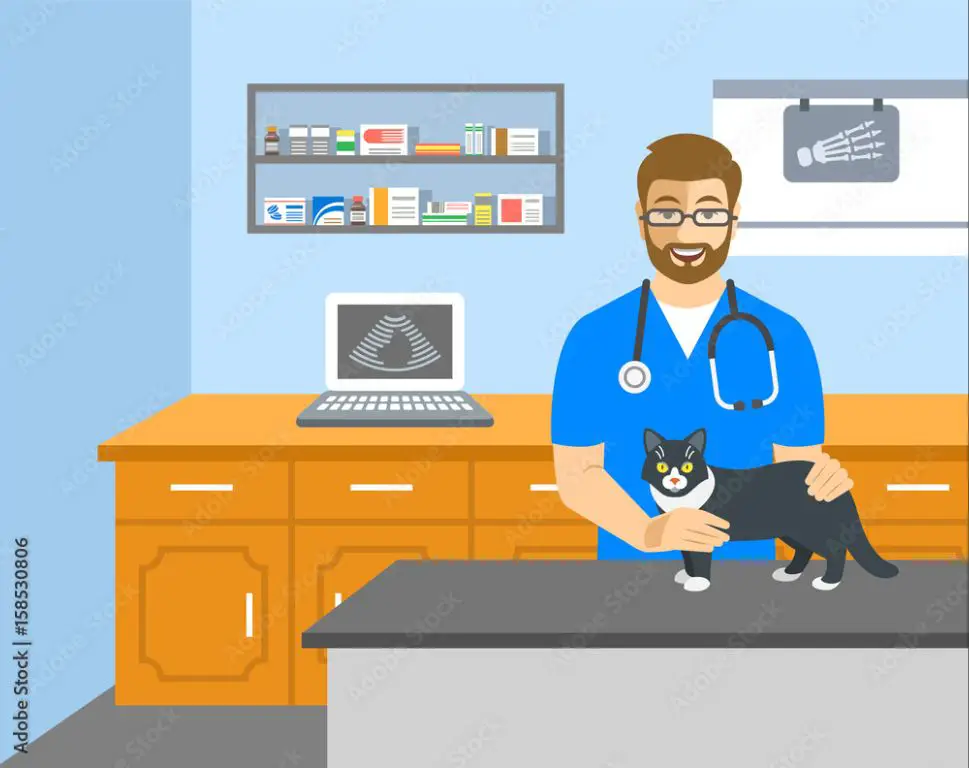The idea that cats have nine lives is an ancient myth and enduring folklore that has captivated people’s imagination for centuries. But where did this myth originate, and is there any truth to the belief that cats can cheat death more than other animals? This article will explore the history behind the nine lives legend, examine if science lends any credence to cats having superior survival abilities, and look at how the myth impacts cat care and welfare in the modern age.
Origins of the Myth
The idea that cats have multiple lives dates back thousands of years. In ancient Egypt, cats were revered and associated with divinity. Bastet, the cat-headed Egyptian goddess of warfare, was said to bestow multiple lives upon cats.1
This myth was reinforced by cats’ ability to survive falls and accidents that would kill other animals. Ancient Egyptians believed the sun god Ra took the shape of a cat during his nightly travels through the underworld. According to myth, Ra engendered nine cats to accompany and defend him.2 This may be one origin of the “nine lives” concept.
During the Middle Ages in Europe, cats were thought to be supernatural creatures associated with witchcraft. People believed witches could transform into cats nine times.3 This likely contributed to the nine lives myth becoming popularized in Western culture.

Scientific Explanation
The myth that cats have nine lives likely arose from observations of cats surviving falls and accidents that would kill other animals. Cats are remarkably agile and have several unique physiological adaptations that help them land on their feet and avoid injury when falling.
One reason cats can survive falls is that they have an innate ability to right themselves in the air and land on their feet. According to a study, cats can tell which way is up even when released upside down. They are able to contort their spine mid-air and orient their limbs so they land on all fours.
Cats also have loose, flexible skin and muscles that act as shock absorbers when they hit the ground. Their lightweight, streamlined bodies further reduce the impact of a fall. Studies have found that cats are able to survive falls from over 32 stories with minimal injuries.
Additionally, cats have thick fur coats that protect their skin if they scrape against surfaces when falling. Their small size compared to their surface area further reduces injury upon impact. Thus, feline physiology gives cats a remarkable ability to survive accidents that would badly injure other animals.
Records of cats surviving accidents
There are many remarkable real-world examples of cats surviving accidental falls from great heights. According to one report, in 1987 a cat fell 32 stories (384 feet) from an apartment building in New York City and survived after being found trapped in a basement (Source). In another case, a cat named Sabrina fell 40 feet from her owner’s apartment before landing on the pavement below. Amazingly, she only suffered minor injuries and made a full recovery (Source). There’s even a documented case of a cat falling 49 stories (approximately 600 feet) and walking away unscathed besides a chipped tooth and minor lung injuries (Source). While falls from such extreme heights are rare, these cases demonstrate cats’ remarkable ability to survive accidents that would likely be fatal for other animals.
Cats’ ability to survive illness
Cats are remarkably resilient when it comes to surviving illness and disease. Their immune systems are adept at fighting off infections, and cats have a reputation for recovering from sickness even when the prognosis looks grim.
There are many stories of cats overcoming severe infections, injuries, and other ailments that might kill other animals. For example, according to a Facebook post by Greek Cat Rescue Samos, a cat named “Mr Squirrel” made a rapid recovery after being found in poor condition: https://m.facebook.com/catrescuesamos/photos/a.2134876056611992/4186423638123880/. The rescue group was able to quickly rehabilitate Mr Squirrel even though he was suffering from multiple issues upon intake.

Cats also have an uncanny ability to bounce back from viruses, infections, and injuries that can afflict both domestic and feral cats. Their physiology and natural behaviors make them adept survivalists in the face of illness. With proper veterinary care and nutrition, most cats can recover fully even after severe health crises.
Cats’ lives vs other animals
When comparing cats’ average lifespan to other common household pets and animals, cats generally live longer than dogs but not as long as some birds or reptiles. According to research, the average lifespan for domestic cats falls between 12-18 years, with some cats living into their early 20s. In contrast, the typical lifespan of dogs ranges from 10-14 years depending on the breed and size [1].
There are several reasons why cats tend to outlive dogs. Cats are generally smaller than dogs, and smaller animals often live longer than larger animals. Cats are also exclusively carnivorous, whereas dogs are omnivorous. The carnivorous diet may confer survival advantages. Additionally, cats are less prone to disease, are better able to avoid injury, and have genetic traits that increase longevity [2].
While cats live longer on average than dogs, other pets like birds and reptiles often outlive cats. Parrots and tortoises frequently live over 50 years. The longest living cat on record reached 38 years old, but parrots and tortoises have been documented living over 100 years. So while cats have a respectable lifespan compared to many mammals, other types of pets are potentially even longer-lived.

Impact on cat care
The myth that cats have nine lives can lead some owners to have unrealistic expectations about their pet’s resilience. While cats are skilled survivors in many respects, they are not invincible. Owners believing their cats have multiple lives to spare may fail to take important precautions to protect their pet’s health and safety.
All cats, no matter how sturdy they seem, require diligent care from their owners. This includes regular veterinary checkups, vaccinations, parasite control, proper nutrition, exercise and enrichment. Indoor cats in particular rely entirely on their owners to meet all their needs. Allowing a cat outside unsupervised is not a substitute for human care and attention.
Well-meaning owners believing their cats have extra lives could become complacent, neglecting preventive care or ignoring signs of illness and injury. No cat is immortal, and a lack of medical intervention can lead to suffering or early death. While cats may survive what seem like near-death experiences, they have only one life to live. Caretakers should do everything possible to make that one life a long and healthy one.
Declawing Controversy
There is ongoing debate around the practice of declawing cats. Declawing involves amputating the end bone of a cat’s toes to prevent clawing and scratching behaviors. Many veterinarians argue declawing should not be performed except for medical necessity, as it removes an important means of defense and mobility for cats. However, some cat owners request the procedure to protect furniture and avoid scratches.
Those against routine declawing cite animal cruelty concerns, as well as risks of long-term pain, infection, and other medical complications from the amputation surgery. They argue clawing is a natural behavior for cats that should not be prevented by permanent disfigurement. Some jurisdictions have banned or limited declawing.
On the other side, some vets contend declawing can be an ethical option if performed properly under anesthesia, with appropriate pain management. They claim it allows cats to stay in homes and avoids options like abandonment or euthanasia that may otherwise occur.
The “nine lives” myth may play into this debate, as some believe cats are resilient and can recover from declawing surgery. However, medical evidence indicates declawing has lasting impacts on cats’ wellbeing. Ultimately, routine declawing remains controversial given the permanent alteration of a cat’s natural state for owner convenience. Increased education on alternatives like routine nail trims, scratching posts, and temporary nail caps may render declawing unnecessary in most scenarios.
Behavior and safety
Despite their curiosity, there are ways to keep cats safe when letting them outside. Start by ensuring your home environment is secure with proper fencing and boundaries. Consider installing shelves or perches on windows so cats can get fresh air while supervised.
Train cats to become comfortable wearing a harness and leash for outdoor excursions. Provide enrichment with toys and activities to satisfy their hunting instincts. Set up outdoor enclosed spaces like catteries or catios so they can enjoy the outdoors safely.
When first introducing an indoor cat to the outdoors, take it slow and don’t force it. Go outside together at first and let them observe from the safety of a carrier. Over time, increase the length of supervised outdoor sessions while rewarding and praising calm behavior.

Never let cats roam unsupervised, as they can injure themselves or get lost. With training and preparation, cats can enjoy safe, stimulating outdoor access. Proper precautions allow their curious nature to thrive while avoiding the dangers of an uncontrolled environment. For more tips, see this helpful guide from the RSPCA on keeping cats safe at home.
Conclusion
Cats have long been associated with the myth of having nine lives due to their perceived ability to survive falls and illness that would kill other animals. While the nine lives myth certainly exaggerates, cats do possess several advantages that enable them to endure mishaps. Their flexible spines allow them to twist mid-air and right themselves when falling. Additionally, their quick reflexes give them extra time to react and brace for impact. Cats also have a strong immune system that can fend off infections other animals succumb to.
However, while cats are more resilient than other pets, owners should still take precautions and not take risks with their cat’s safety. Providing a stimulating indoor environment, proper nutrition, vet checkups, and supervision when outdoors will ensure your cat lives a long and healthy life. Though the myth persists, a cat’s life is still precious and should be cared for responsibly.
In the end, the nine lives legend reveals our awe and admiration for the cat’s spirit of resilience and survival. But it is up to us as caretakers to value each of our cat’s lives, however many they may have.

